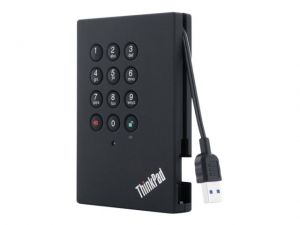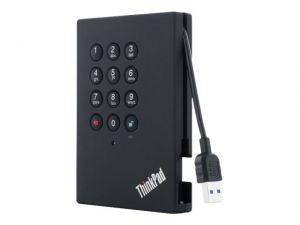External Hard Drives
External hard drives come in two main sizes, portable and desktop. Portable external drives tend to be 2.5” hard drives in a slimline chassis. They typically connect via USB or Firewire and offer similar storage capacities to their desktop counterparts although are more fragile and susceptible to damage. Portable drives are usually powered by the computer they connect to and therefore don’t need a separate power supply. Desktop external hard drives are based on larger 3.5” hard drives, usually have their own power supply and offer the highest possible storage capacities and performance levels.
There are three main considerations when choosing an external hard drive. Most important is the capacity of the drive – the higher the capacity, the greater the storage space for your precious files. The drives spindle speed (stated in RPM – revolutions per minute) governs how fast data is read from and written to the drive with the higher the number the better. Finally, the drive’s interface dictates how the drive connects to your computer. USB and Firewire are the two most common interfaces but other connections like HDMI are also available.
- Lenovo ThinkPad USB 3.0 Secure - hard drive - 500 GB - USB 3.0MPN:0A65619As low as £157.76 £189.31
-
External hard drives come in two main sizes, portable and desktop. Portable external drives tend to be 2.5” hard drives in a slimline chassis. They typically connect via USB or Firewire and offer similar storage capacities to their desktop counterparts although are more fragile and susceptible to damage. Portable drives are usually powered by the computer they connect to and therefore don’t need a separate power supply. Desktop external hard drives are based on larger 3.5” hard drives, usually have their own power supply and offer the highest possible storage capacities and performance levels.
There are three main considerations when choosing an external hard drive. Most important is the capacity of the drive – the higher the capacity, the greater the storage space for your precious files. The drives spindle speed (stated in RPM – revolutions per minute) governs how fast data is read from and written to the drive with the higher the number the better. Finally, the drive’s interface dictates how the drive connects to your computer. USB and Firewire are the two most common interfaces but other connections like HDMI are also available.
IT products and services from Evaris
We supply IT products and managed services to thousands of customers, including small to medium-sized businesses as well as the public sector.
Our talented and friendly team of experienced IT specialists are passionate about helping our customers fulfil their technology needs. We can provide complete IT solutions, including workplace, data centre, storage and networking products, backed by the supporting services needed to implement and support your infrastructure securely - whether that’s on premise, in the cloud or a hybrid solution.
The Evaris difference
- KNOWLEDGEABLE, EXPERIENCED TEAM
We live and breathe technology. Our team have accrued fantastic feedback for their knowledge and service levels. - FAST RESPONSE TIMES
We offer the speed and flexibility that vendors and distributors typically struggle to deliver. - AWARD-WINNING CUSTOMER SERVICE
We hold long-standing client relationships and have attracted testimonials and case studies for the technology solutions we’ve implemented. - COMPLETE SOLUTIONS
From product selection right through to configuration, deployment, licensing and ongoing support. You are in safe hands with Evaris. - TECHNOLOGY SPECIALISTS
Accreditations and partnerships with leading technology vendors. - VENDOR AGNOSTIC APPROACH
We take a holistic, impartial approach focused on identifying the right technology solutions and tailoring them to the needs of your organisation.


